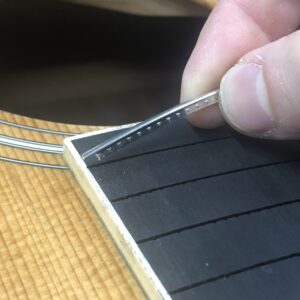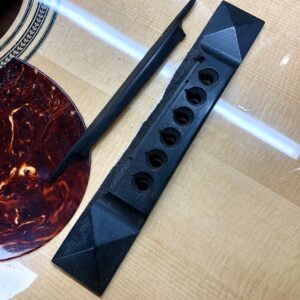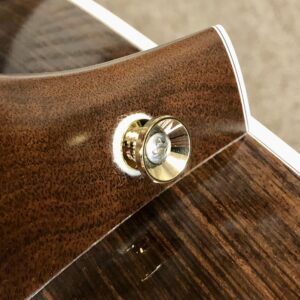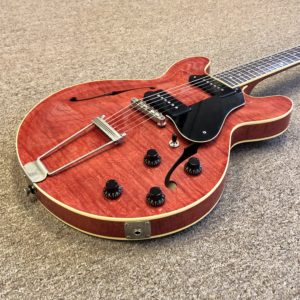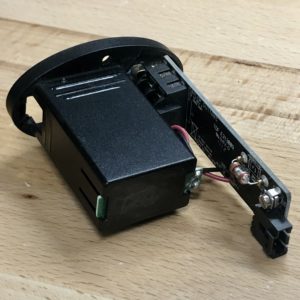Making A Bone String Nut
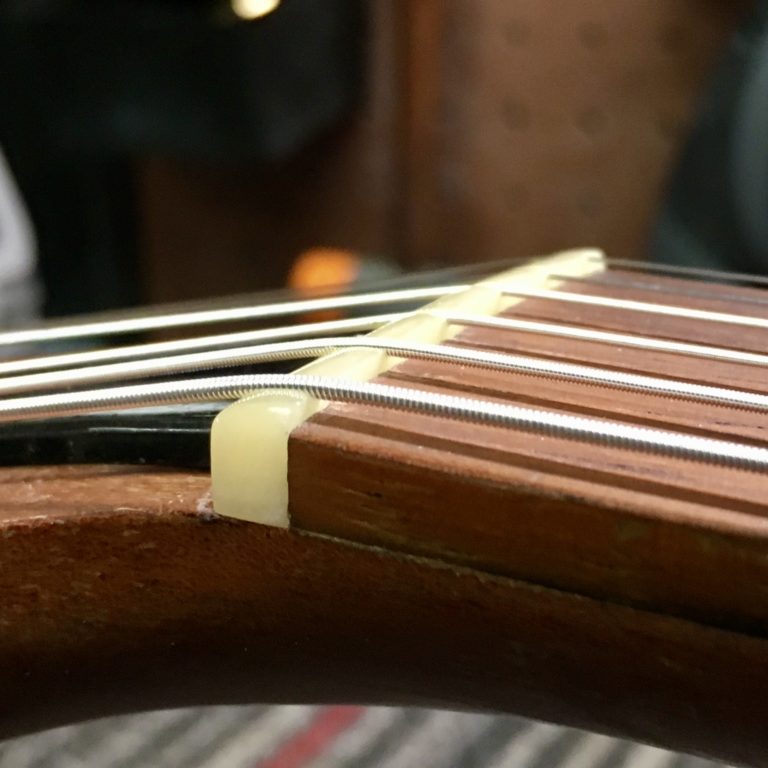
The nut is a vital part of any stringed instrument. It sets the string spacing and helps to set the action for the instrument’s lower register. Without a well made nut, proper setup will not be possible.
Though they can be made from many different materials, for this article, we will be focusing on the process of hand cutting a new string nut out of a piece of bone. Click here to read our article on installing a pre-slotted string nut.
Making A String Nut: Step By Step
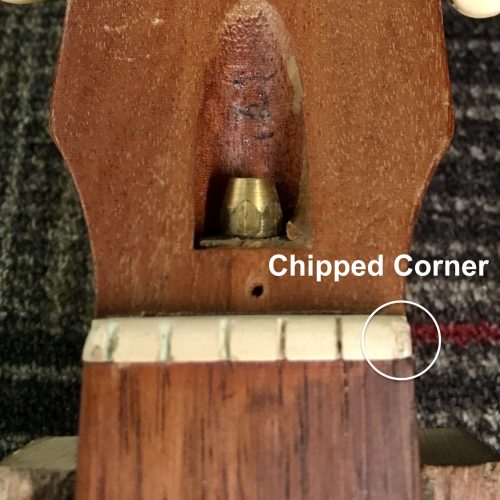
This Gibson acoustic guitar came into the shop with damage to the original string nut. The notch that had formerly held the first string in position had chipped off, rendering the first string unusable. There was no way around it, this nut needed to be replaced.
Removing The Nut And Cleaning The Slot
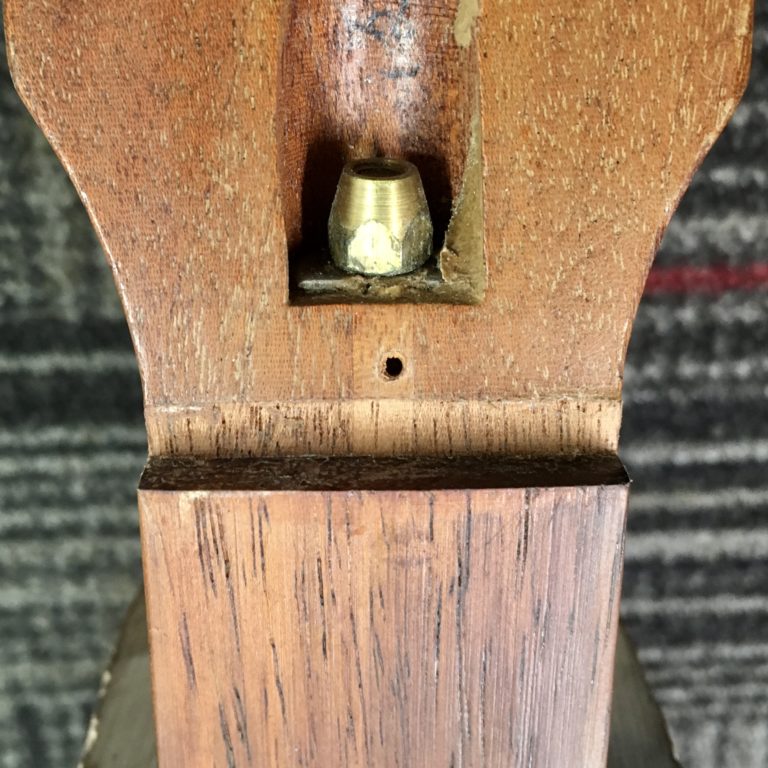
Before a new nut can be installed, the original must be removed and the slot prepped to accept a replacement. It is important that the slot be true and square, otherwise the new nut will not sit properly.
Removing a nut can be a finicky task, especially if an excessive amount of glue was used during the previous installation or there is a thick coating of finish on the neck. A sloppy removal will show in the finished product.
We start by carefully scoring the edges of the nut with an X-Acto razor blade. This breaks any bonds with the surrounding finish to prevent chipping during removal. Afterwards, a combination of light taps with a small hammer and/or applied pressure are usually all that is required to free the nut from the slot. (On rare occasions, if it has been too aggressively adhered, removal may devolve into the unpleasant chore of cutting/chiseling out the material piece by piece.) Once the old nut has been extracted, a combination of chisel and file work is used to remove glue residue and clean up the slot.
Shaping A Nut Blank
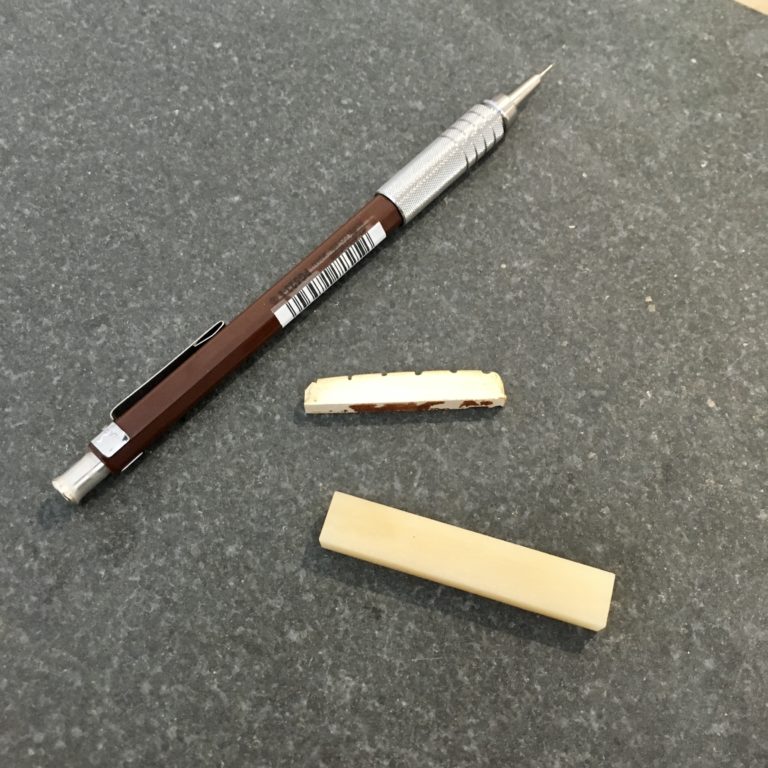
String nuts can be made from a variety of materials. In this case, the original was made of synthetic material, likely Corian.
Since originality was not a concern for the client, we chose to replace it with a piece of unbleached bone. The yellowed “vintage” color matched the instrument well and we felt that the ability to give it a high polish adds a touch of class to the finished product.
Using a fine pencil, we sketched the outline of the old nut onto the bone blank that is to become the new nut. With the tracing as a guide, we are able to trim the new nut roughly to shape using power tools. Then we switch to more delicate means to carefully fit the nut to the slot that we prepped earlier. We are aiming for a snug fit with the blank making good contact across the length of the bottom and front edges of the nut slot.
Marking The String Spacing
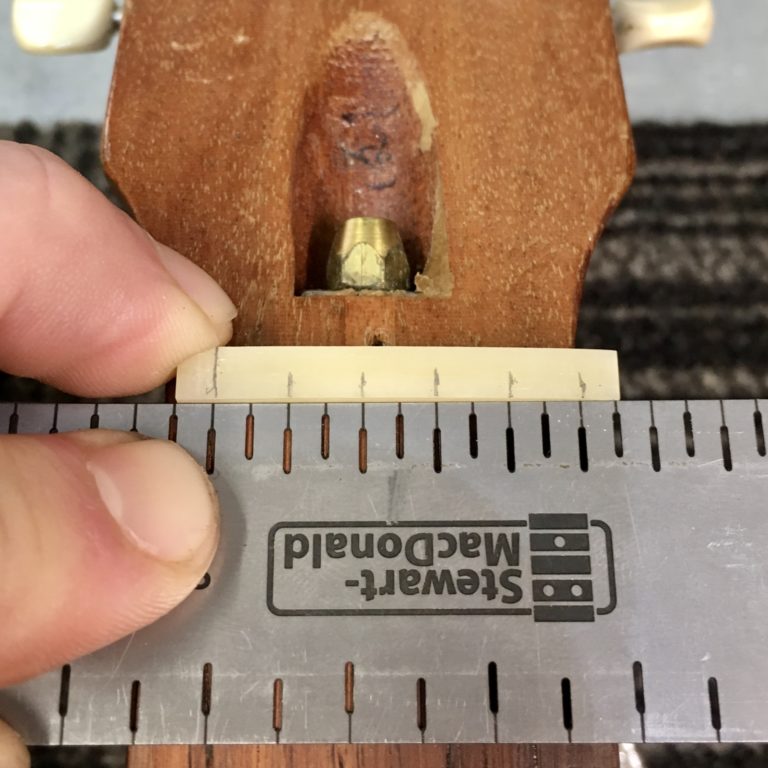
Using a special string spacing ruler as a guide, we mark out the string positions with a pencil on the top of the nut. The ruler is useful to ensure the strings fall in a way that feels comfortable under a player’s fingers.
We typically mark the outer strings about 1/8″ in from the edge of the fingerboard on each side; For most players, this creates enough of a buffer to avoid pulling the strings off of the side while maximizing the remaining space available to accommodate the inner strings.
Nut Slotting
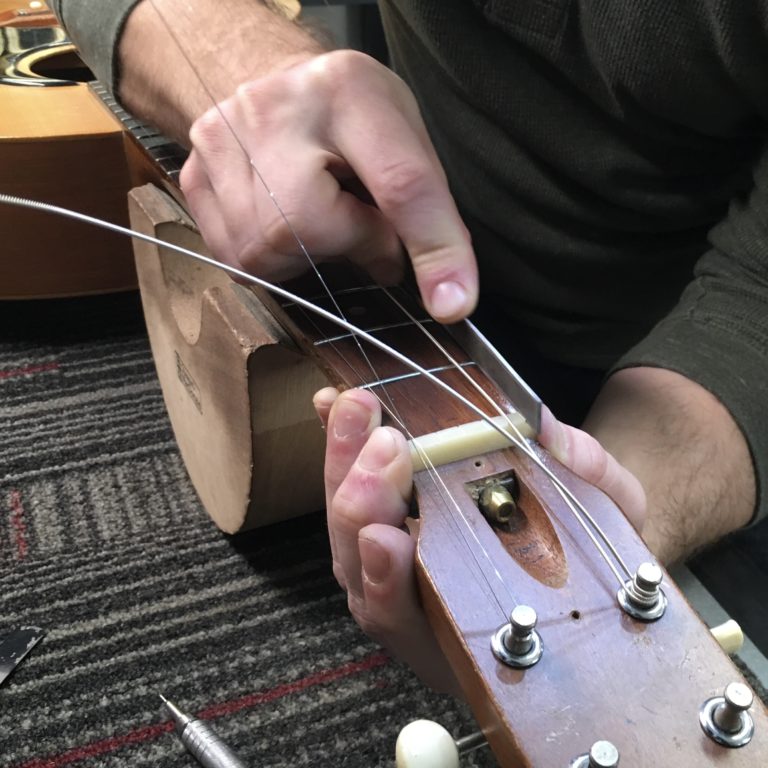
Once the positions have been marked, we are ready to begin cutting them. To do this, we use a set of gauged files to fit each of the individual strings in the set. The convex files leave a rounded bottom for the string to sit in.
It is important to work slowly, and check progress often, to avoid overshooting the depth and ruining the piece.
Nut Dress and Profile
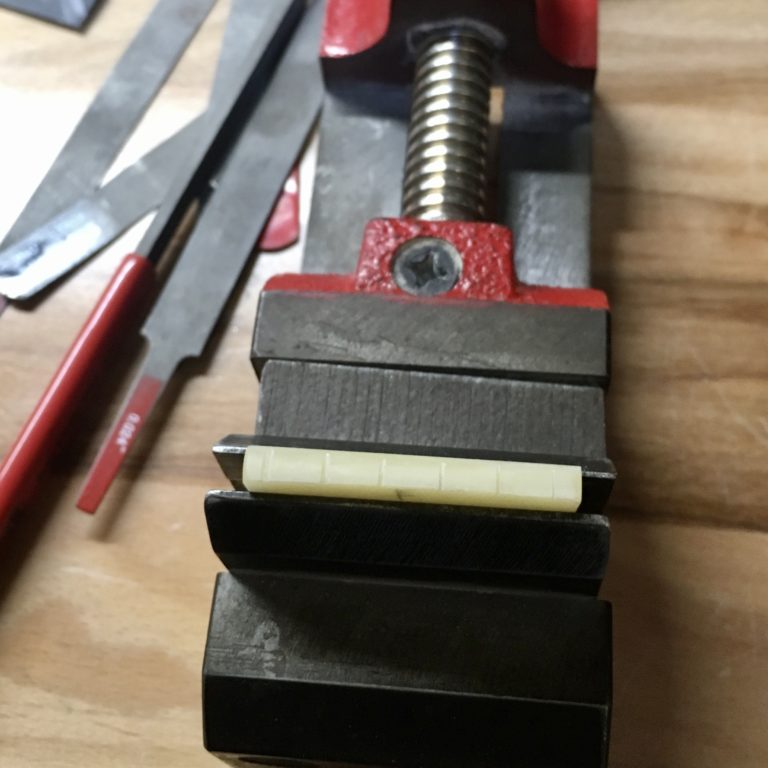
When the slots have been cut near their final depth, it is time to shape the nut. This is where we remove excess material from the top, create the sloped profile of the back, and round over sharp edges on the sides.
This step removes potential sources of friction that might catch against the strings, or annoyingly catch the players hand during use.
We often find that instruments arriving to our shop for the first time are fitted with a nut that, while functional, has been insufficiently dressed and profiled from the factory. In these cases, we are happy to perform this work on the existing nut, to help it achieve its fullest potential without the need for replacement.
Polishing and Installation
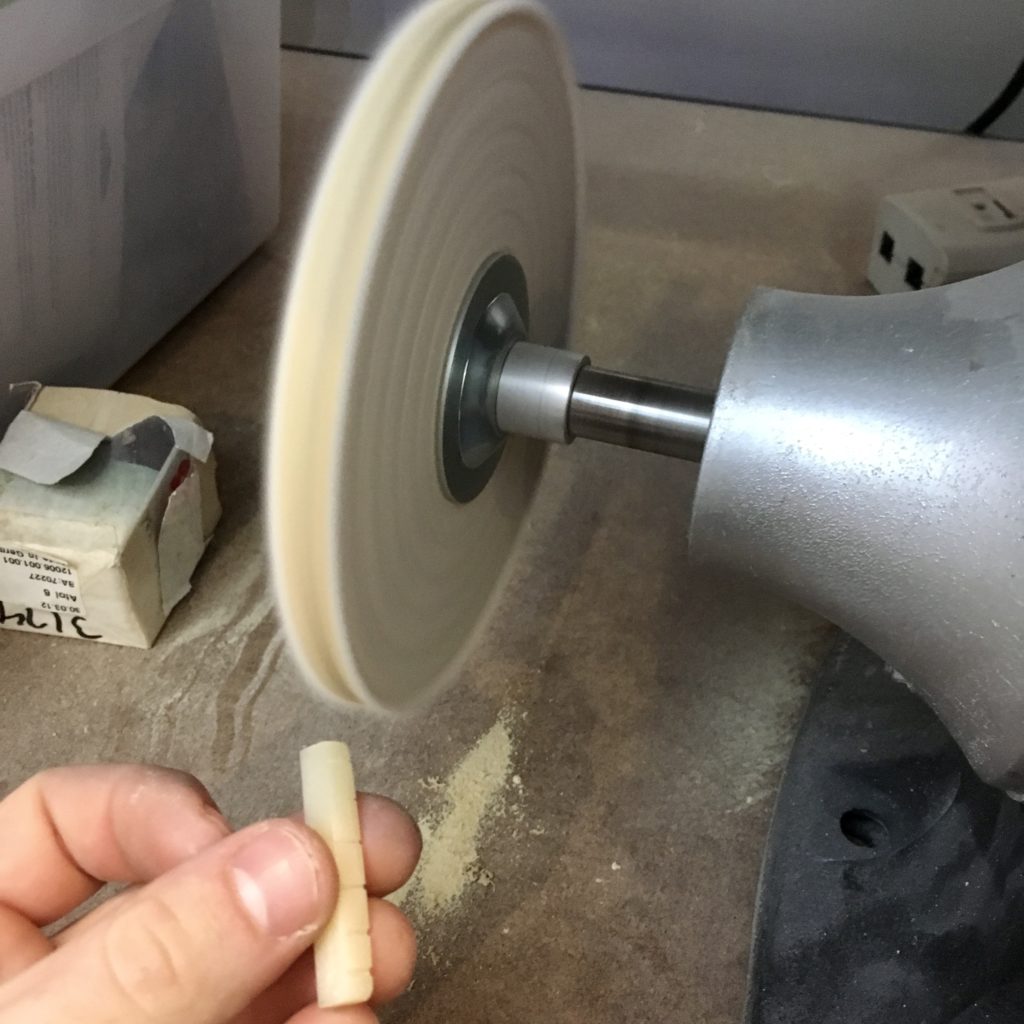
With the shaping complete, we set to work bringing the nut up to a high polish. This reduces friction, while creating an aesthetically pleasing piece that will be worthy of its prominent position at the base of the instrument’s headplate.
To do this, we use sandpaper to remove any coarse sanding or tooling marks, before progressing to higher grits for polishing. As a last step, we often use a dedicated buffing wheel to achieve a high gloss and professional look.
Once finished, we prefer to tack the nut in position using a small dab of wood glue. Wood glue is sufficiently tacky to hold it in place, but the bond is weak enough that it can be removed easily when required.
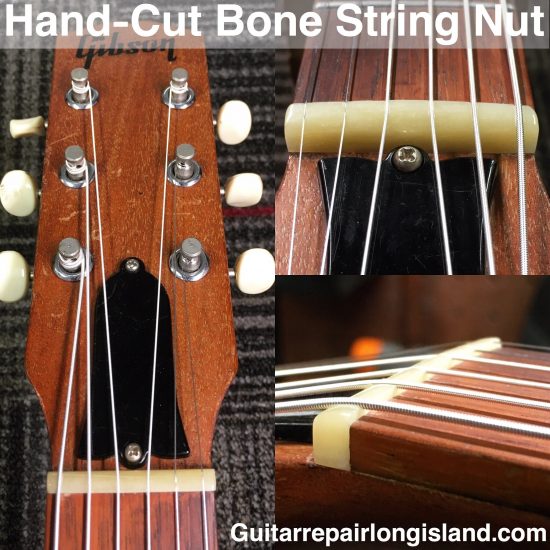

Erik Salomon - Calico Guitarworks Owner / Head Technician
Tech Talk articles are part of an ongoing effort to provide clear and detailed answers to common questions about guitar maintenance, modifications, and repairs.
While not intended as a step-by-step guide to servicing your own instrument, we hope that you will find value in the information provided.

Great Repairs Start With The Right Parts
Many of the parts mentioned in our blogs are available for purchase at:
GuitarRepairParts.com
Enter the code "TechTalk10" at checkout for 10% off your first order.
About Calico Guitarworks
Calico Guitarworks is the area’s premier destination for fretted musical instrument care and maintenance. Owned and managed by Erik Salomon, the shop is dedicated to providing quick, honest and reliable service. The staff at Calico Guitarworks has a combined 25+ years of professional guitar repair experience. Sharing the knowledge that we accumulate in this focused pursuit is at the core of what we do. Learn more About Calico Guitarworks, explore our Frequently Asked Questions, or Contact us with a specific request.


